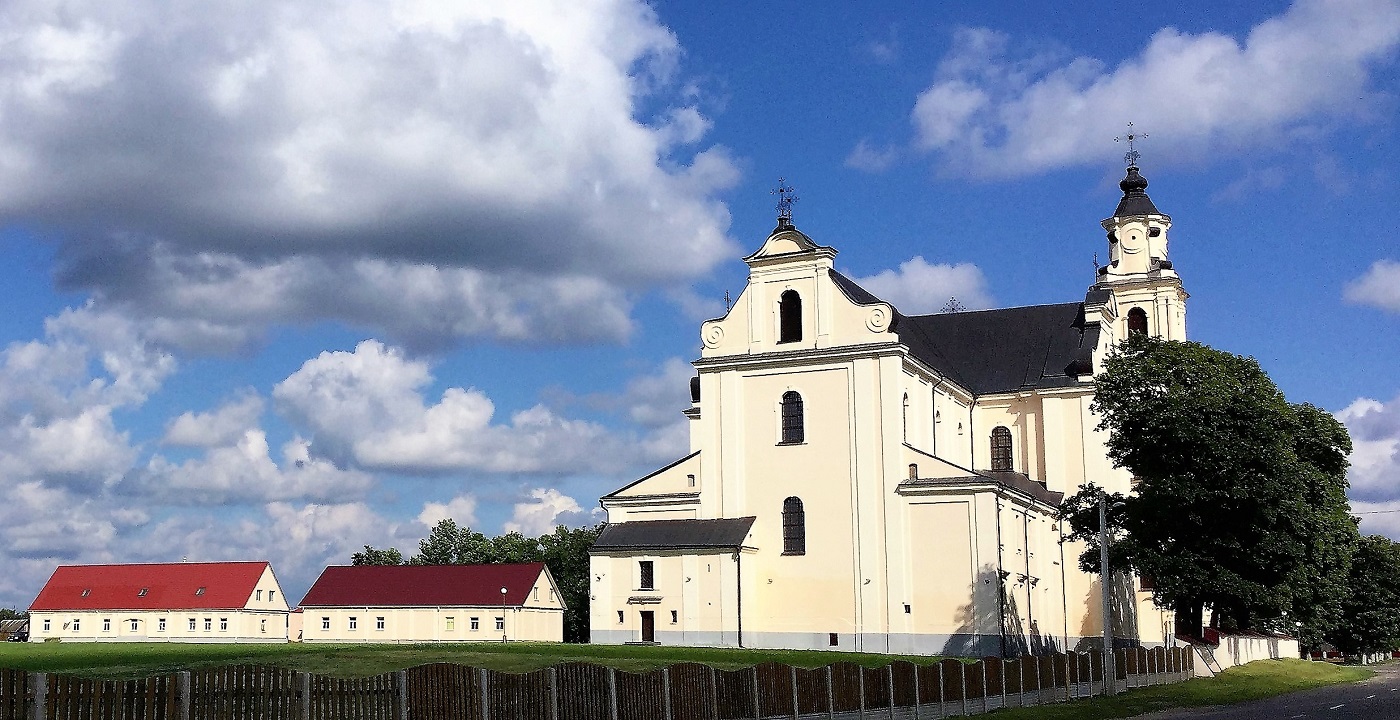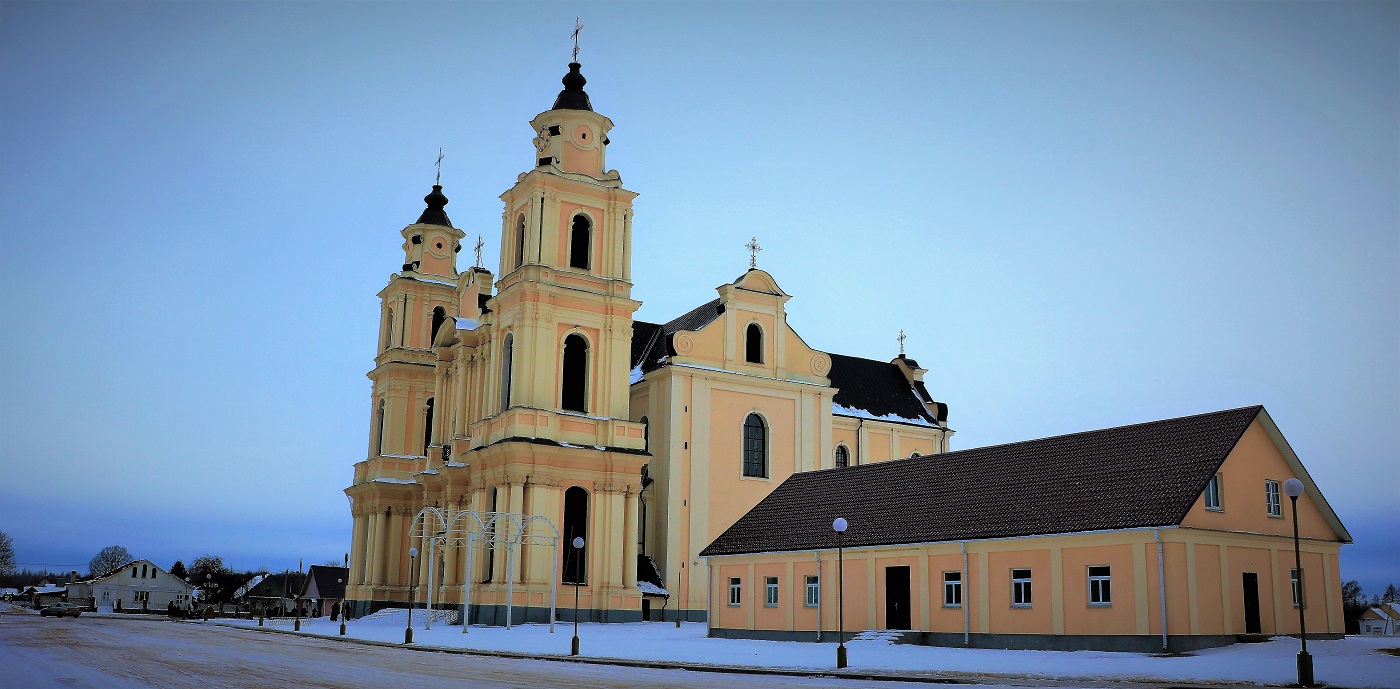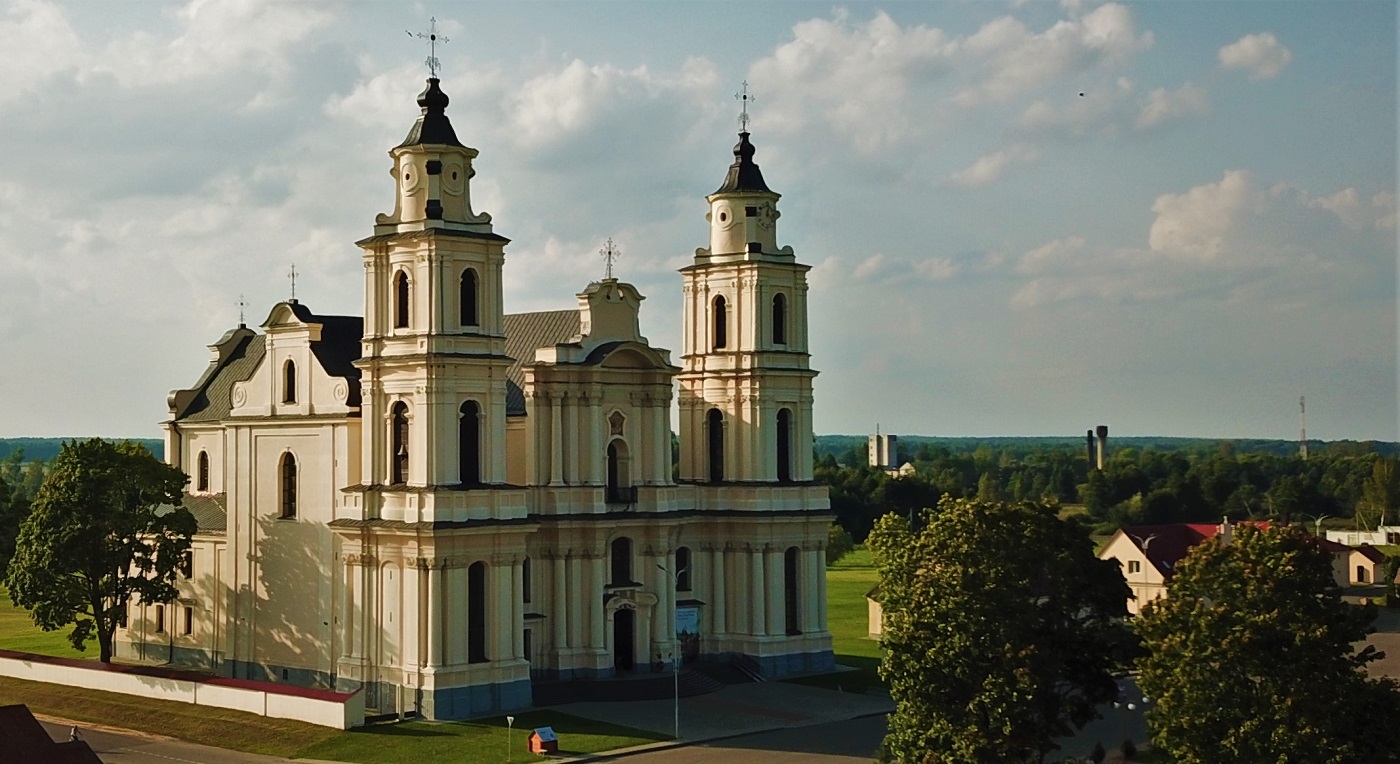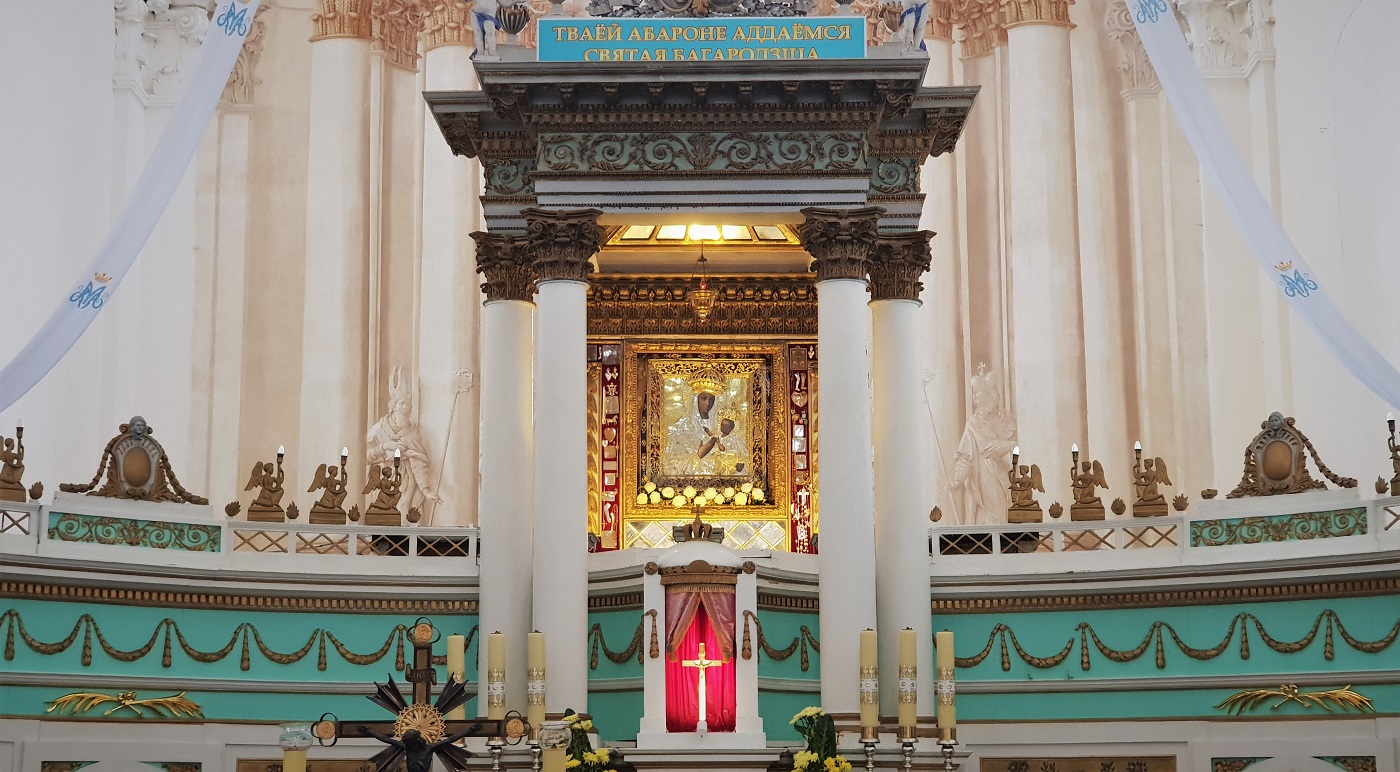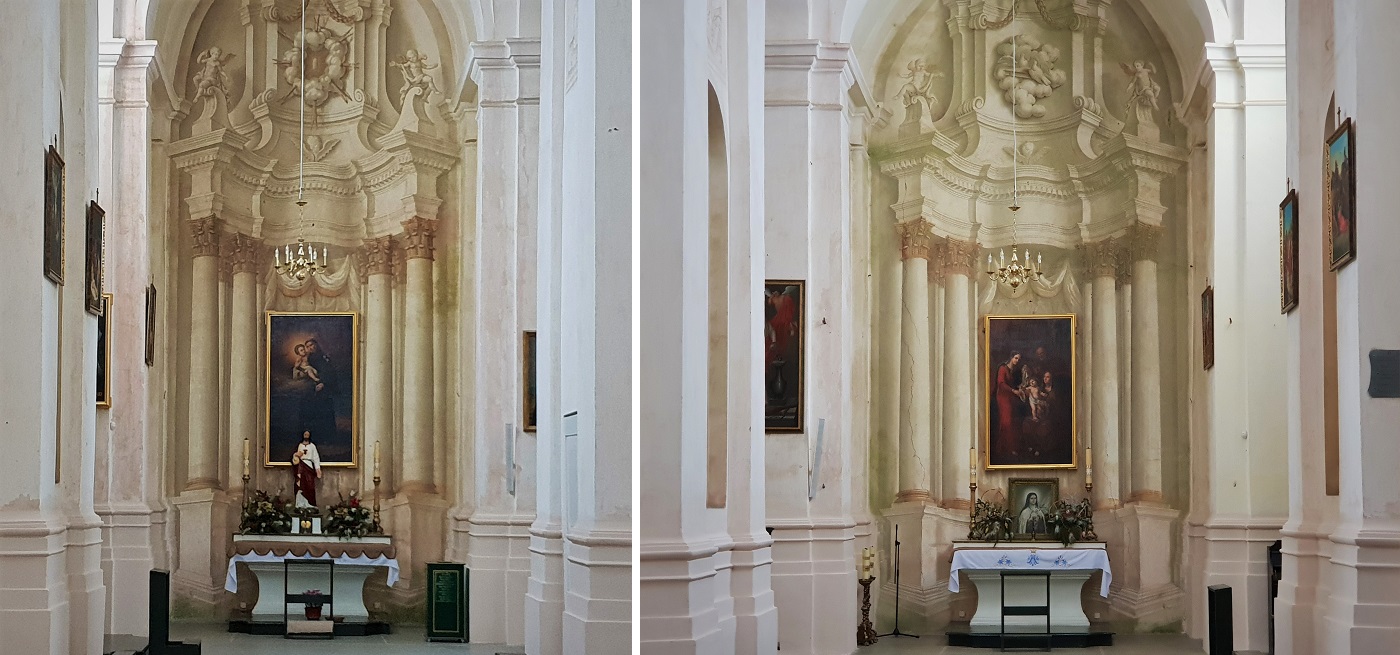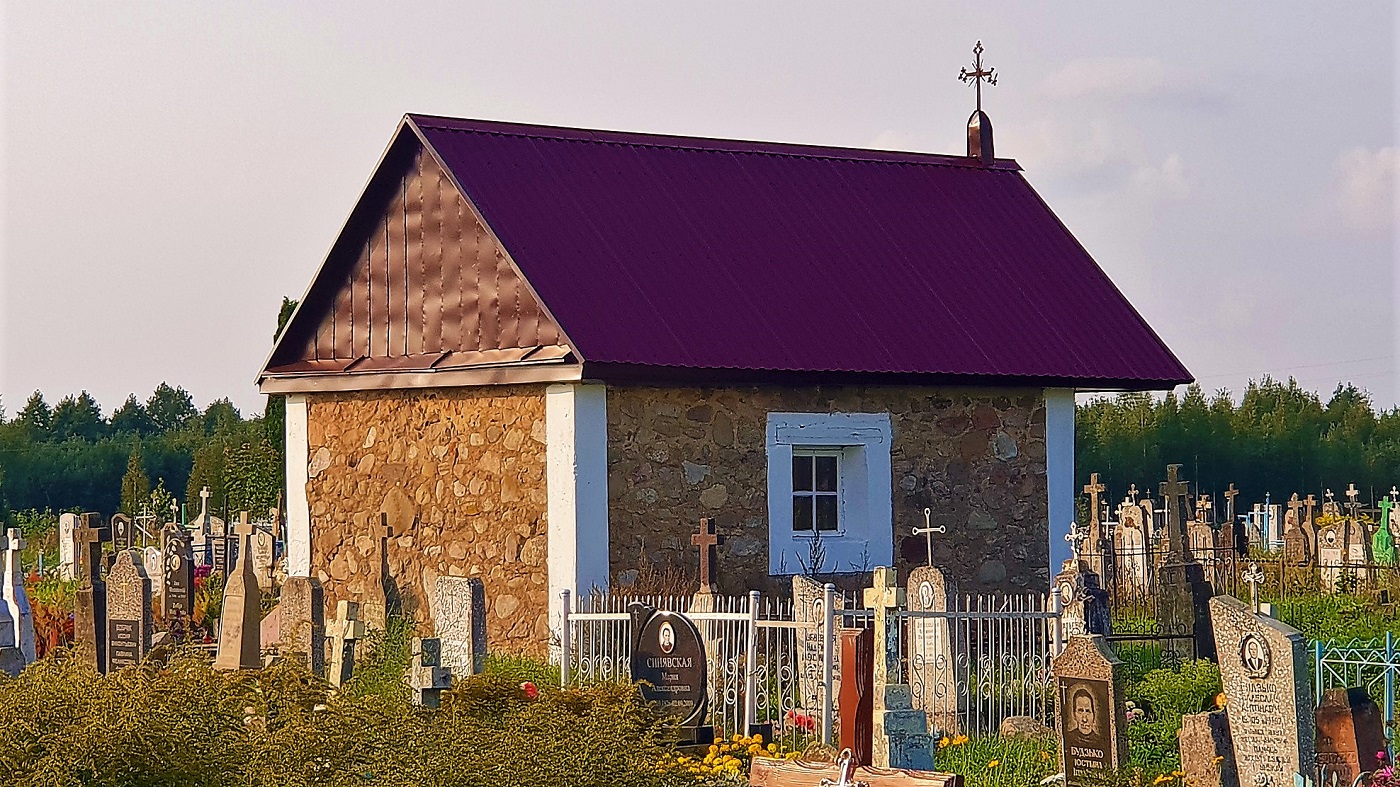Budslau - is a village of Myadzyel district, Minsk region of Belarus. The main and in fact the only attraction of the Budslau village is the Catholic church of the Assumption of the Blessed Virgin Mary. This majestic and beautiful temple has very impressive dimensions and a memorable appearance. The church in the village Budslau is one of the key attractions of the entire region and is widely known not only in Belarus, but also far beyond its borders.
The church of the Assumption of the Blessed Virgin Mary was originally built in the village of Budslau in 1633-43. However, it was not exactly the temple that you can see in the village of Budslau today. The fact is that in 1767-83 the church underwent a very deep reconstruction and refinement. Then, in the middle of the 18th century, next to the old church, a huge new church was erected, which has survived to this day. In this case, the old church of the 17th century turned into just one small side chapel, closely adjacent to the new church. This fragment of the 17th century building is perfectly preserved to our time. And even more, inside this chapel, consecrated separately in honor of St. Barbara and having a separate entrance (from the back side of the church), there was preserved an ancient, unique and very valuable wooden carved altar executed in 1643-47 immediately after the erection of the first stone church.
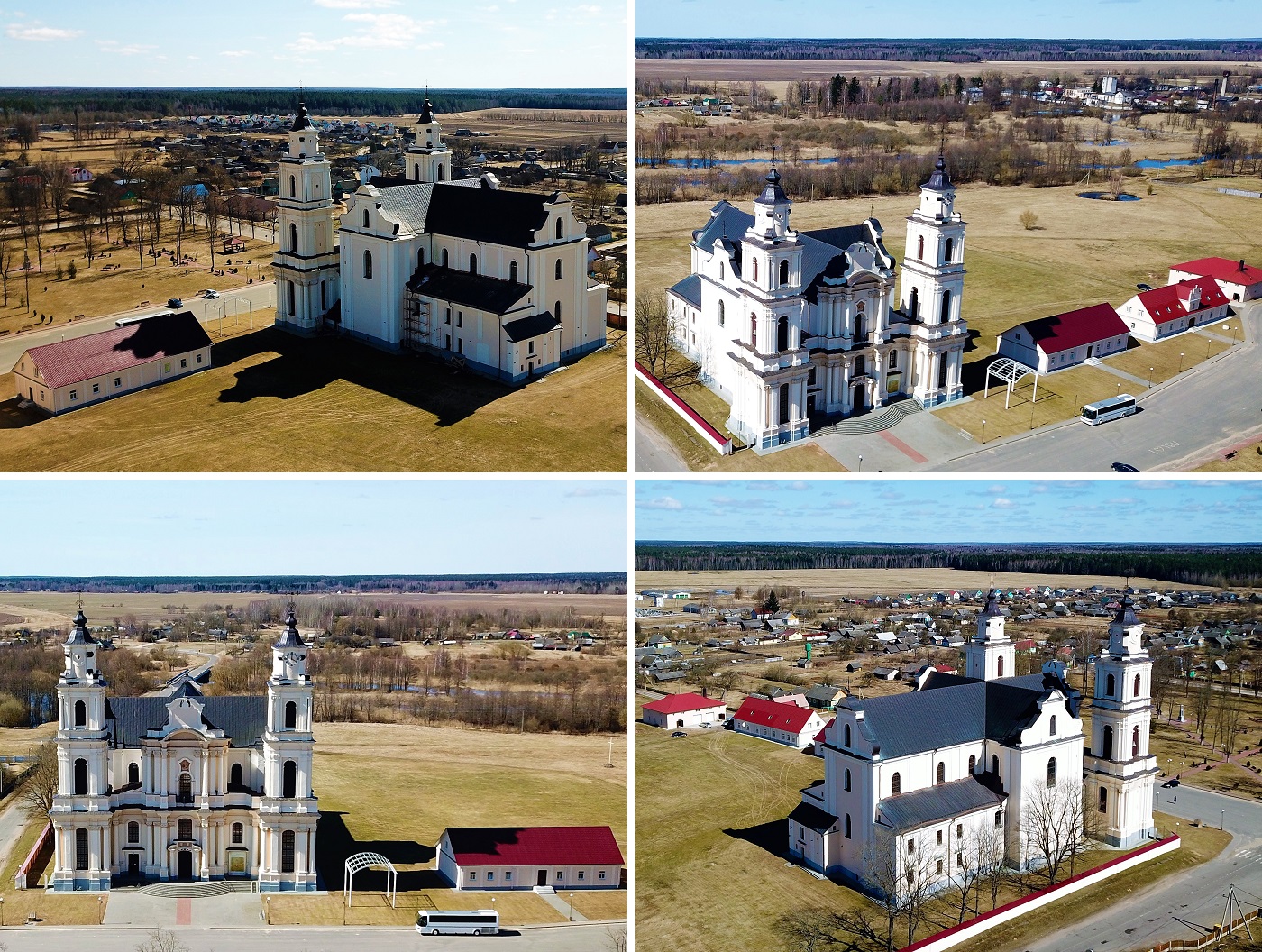
Originally, the church in the village of Budslau was part of the Catholic Bernardine monastery. This monastery was founded in 1504. Before the construction of the first stone church in the middle of the 17th century, a wooden chapel first entered the monastery in the village of Budslau, and then a wooden church. In 1613, a monastery in the village of Budslau was given the icon of the Mother of God. This icon was brought from Rome in 1598 as a gift from the Pope, the famous statesman of the Grand Duchy of Lithuania of that time - Jan Patz. The icon was transferred to the monastery by one of his heirs after his death. Thus, as you can see, the church in the village of Budslau is very old and has even more ancient shrines and monuments of culture.
Over the long centuries of its existence, the icon of the Mother of God of Budslau has become famous for its miraculous properties (therefore it was given a separate name by the name of the village). This icon has survived to our days and today is located behind the main altar of the church in the village of Budslau. At the moment, the icon of the Mother of God of Budslau is the central Catholic shrine of all Belarus and attracts thousands of pilgrims. To emphasize the special role of this icon for Belarusian Catholics in recent times, it was crowned with papal crowns. They symbolize the special importance and great value of this shrine. And the church in the village of Budslau, as the place where this icon is kept, is today a national sanctuary for the Catholics of Belarus (that is, one of the most sacred places and the main destination for pilgrimage). The national sanctuary of the Mother of God in Budslau occupies one of the central places in the life of the Catholic Church in Belarus.
Briefly mention the most important events from the history of the church and monastery in the village of Budslau. So, the monastery founded in the beginning of the 16th century functioned well until the middle of the 19th century. During this time, the wooden chapel was replaced by a wooden church, then in the middle of the 17th century a small stone church was erected on the place of the wooden chapel. After this, in the middle of the 18th century, using a separate part of the previous temple, a new majestic temple was built. Then in 1852 the Bernardine monastery in the village of Budslau was closed. After that the church became an ordinary parish church, although many pilgrims did not cease to visit it, because even then the icon of the Mother of God of Budslau was widely known. After that, in the second half of the 19th century, the old wooden monastic buildings were replaced by a new stone building, which became a plebania (the house of the priest and the parish administration). The building of plebania has survived to the present day. It is located very close to the church in the village of Budslau.
In the interwar period, when the village Budslau was a part of Poland, the building of the church was thoroughly restored. However, immediately after the arrival of Soviet power in this village in 1939, the church was closed. Nevertheless, the church in Budslau village was not used in any other capacity (for example, as a warehouse), as it often happened in Soviet times in Belarus. The temple just left empty. Therefore, after the Second World War, priests even came here from time to time, and people regularly gathered for prayers. In the early 1990s, the church began revival in the village of Budslau. Then the icon of the Mother of God was crowned, and the church received the status of a national sanctuary. Also, the Bernardine monks returned here. On the full restoration of the monastery is not yet a question. The monks are simply living here in accordance with their charter and performing the role of parish priests. Restoration and renovation work was very long. To date, the church in the village of Budslau is in very good condition. However, there are still some elements of the interior decoration of the temple, which are still need to be restored. By the way, the interior of the church has a very remarkable feature: in the interior of the temple there are a number of decorative elements (such as cornices, pilasters and even whole altars) that look bulky, but in fact are simply skillfully drawn on flat walls.
Given the special role of the church in the village of Budslau in the life of the Belarusian Catholics, the Pope in the mid-1990s appropriated this title to the church: "Minor Basilica". This honorary title has nothing to do with the architecture of the church, but emphasizes the value and value of the church in the village of Budslau for the Catholic Church. In Belarus there are only a few churches, which are given a similar title. This status shows that such temples are the most important temples in their dioceses (after cathedrals). By the way, the title "Major basilica" means that some temple is in the direct jurisdiction of the Pope. There are only six such temples in the whole world. Thus, the title "Minor Basilica" is the highest title, which can in principle be awarded to a Belarusian church. And the church in the village Budslau is exactly like that.
Thus, today the church in Budslau is an outstanding architectural monument of republican significance, a valuable landmark of Belarus and one of the key shrines for Belarusian Catholics. This church and the icon of the Mother of God of Budslau, which is here kept, have a special status in the Catholic Church, emphasizing their importance and value. Tens of thousands of tourists from different countries, belonging to different Christian confessions, come here every year. Regularly in early July, here are held very large-scale Catholic festivals. Very valuable cultural monuments are preserved here (the ancient wooden altar and the icon of the Mother of God). And next to the church in the village of Budslau there is a building of plebania, which is also recognized as an architectural monument of the 19th century.
Also, one can not but say a few words about the tourist infrastructure of the village Budslau in general. So, here there are several shops of different profiles, cafes and bank and post offices. All these objects are located on the same area as the church. This area, by the way, is proudly called: "Red Square". In addition, right on Red Square in the village of Budslau there is a very well arranged small square, in the center of which there is a monument dedicated to the events of the Great Patriotic War.

